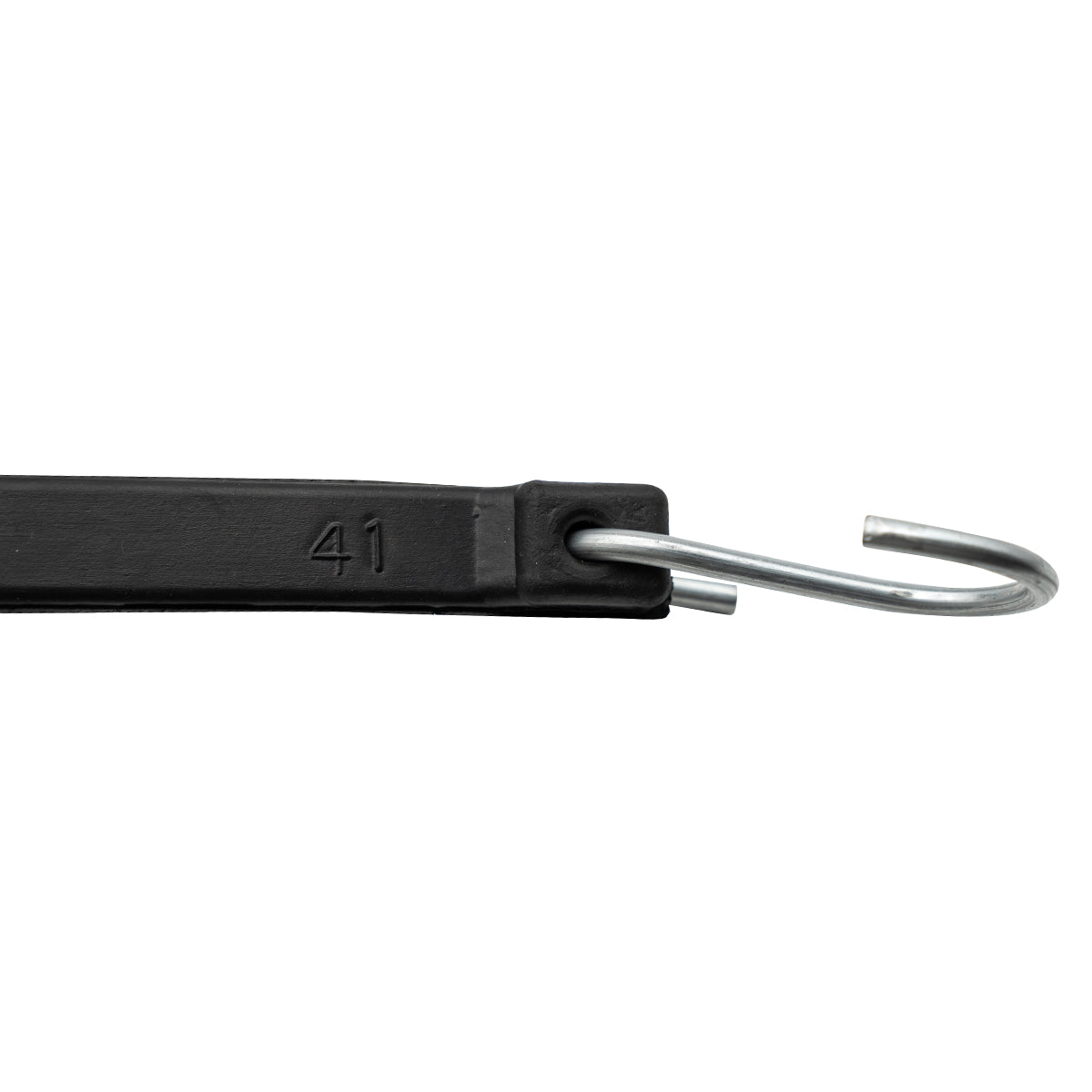
Natural Rubber Tarp Straps: Strengths, Uses, and Limitations
Natural rubber tarp straps are a popular choice for securing cargo, equipment, and covers. Their flexibility, strength, and affordability make them useful for a variety of applications. But while they offer excellent stretch and holding power, they’re not always the best choice—especially for outdoor use.

Exposure to UV rays, moisture, and extreme temperatures can cause natural rubber to break down over time, leading to cracking and loss of elasticity. If you’re using tarp straps for long-term or demanding outdoor conditions, it’s important to understand how different materials perform.
This article explores the properties of natural rubber tarp straps, their best applications, and why they may not be the most reliable option for outdoor use.
What Are Natural Rubber Tarp Straps?
Natural rubber tarp straps are best suited for indoor and short-term use where flexibility and strength are needed. Made from latex, they stretch and retract easily, making them great for securing loads in warehouses, transportation, and temporary setups.
However, they don’t hold up well outdoors. Exposure to sunlight, moisture, and extreme temperatures causes them to dry out, crack, and lose elasticity. While they perform well in controlled environments, they aren’t built for long-term outdoor durability.
Best Applications for Natural Rubber Tarp Straps
Natural rubber tarp straps are best used in indoor or controlled environments where they provide reliable stretch and durability. Here’s where they work well—and where they don’t.
Best Uses:
- Warehouse & Indoor Storage – Secure items in stable, climate-controlled conditions.
- Temporary Load Securing – Ideal for short-term transport where straps won’t face harsh weather.
- Mild, Dry Conditions – Performs well when UV exposure and moisture are minimal.
Where to Avoid Using Them:
- Long-Term Outdoor Exposure – Sunlight and heat cause rubber to dry out and crack.
- Wet or Humid Environments – Moisture weakens rubber over time.
- Extreme Temperatures – Cold makes them brittle, while excessive heat softens and degrades the material.
If your application involves prolonged outdoor use or exposure to harsh elements, natural rubber isn’t the best option.
Rubber Types and Their Best Uses Not all rubber is created equal. Different types of rubber offer varying levels of durability, weather resistance, and flexibility. Here’s a quick look at how natural rubber compares to other materials:
| Type of Rubber | Best For |
|---|---|
| Natural Rubber | Indoor storage, short-term securing, high elasticity needs |
| EPDM Rubber | Long-term outdoor use, UV and ozone resistance |
| Neoprene Rubber | Oil-resistant applications, marine and industrial use |
| Silicone Rubber | Extreme temperature exposure, food-grade and medical applications |
While natural rubber excels in elasticity, it lacks the weather resistance needed for outdoor durability. If you need tarp straps that will hold up in harsh conditions, EPDM tarp straps are a better option.
Why Natural Rubber Tarp Straps Are Not Ideal for Outdoor Use
Natural rubber tarp straps may seem like a durable option, but outdoor conditions wear them down faster than you’d expect. Unlike some synthetic rubbers, natural rubber doesn’t have built-in resistance to the elements.
- Sunlight: UV rays break down natural rubber over time, causing cracks and loss of flexibility.
- Moisture: Rain and humidity weaken the material, making it more prone to snapping.
- Temperature Swings: Natural rubber struggles with extreme heat and cold, becoming too soft in the sun and brittle in freezing weather.
If you’re using tarp straps indoors or for temporary outdoor jobs, natural rubber works just fine. But for long-term outdoor use, it won’t last. That’s why it’s important to choose the right material for the job.
Choosing the Right Tarp Strap for Your Needs
The best tarp strap for the job depends on where and how you’re using it.
- If you need strong, flexible straps for indoor storage or short-term securing, natural rubber is a solid choice.
- If your straps will be exposed to constant sun, rain, or extreme temperatures, they won’t hold up—a weather-resistant material like EPDM is a better fit.
Natural rubber works well in the right conditions, but for long-term outdoor use, it’s worth investing in something built to last. Choosing the right material now can save you time, money, and frustration down the road.


